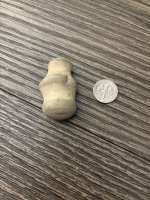scsomike
Greenie
I just got my Ace 250 last night and decided to play with it a little today. I went out in my yard just to see how it works and i am getting all sorts of signals. I dug on a lot of them but didn't find much. After getting a good signal (repeatedly, both directions) I dug up a rusted piece of metal. I am having a problem of getting signals one way and not the other, then i get a signal both ways that just disappears. I decided to try my luck at coin shooting in the yard to see how that will do. I might have misunderstood what all I have read, but when you go to the coins setting, isn't it supposed to eliminate all TONES for anything but coins (understanding that pulltabs and such might show up as a nickel). I still get the occasional tone for bottle caps/iron/pull tabs even when I am in coin mode, and it's not the sustained bell tone, it's the abrupt tone.
Any help would be greatly appreciated. I know I am still very new and trying to learn the machine, just making sure I understood what I've read so far. Also, I turned the sensitivity down and it didn't seem to cut it out that much, the tones i get only show to be around the 2 inch level.
I read somewhere that sometime wrote up a tricks and tips for the Ace 250. Does anyone know where I can get that at?
Sorry for all the questions,
Mike
Any help would be greatly appreciated. I know I am still very new and trying to learn the machine, just making sure I understood what I've read so far. Also, I turned the sensitivity down and it didn't seem to cut it out that much, the tones i get only show to be around the 2 inch level.
I read somewhere that sometime wrote up a tricks and tips for the Ace 250. Does anyone know where I can get that at?
Sorry for all the questions,
Mike




